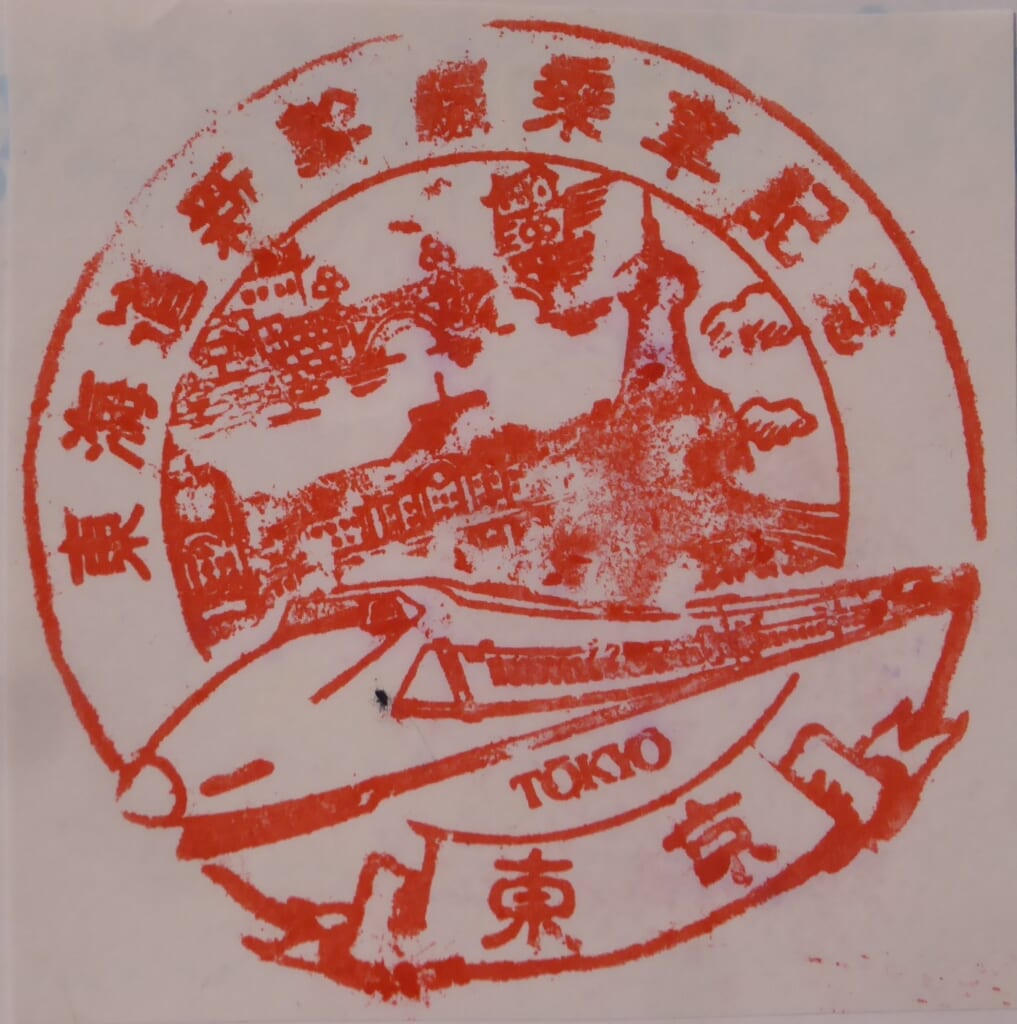Explanation of the Fifty-three Stations of the Tokaido 1 Nihonbashi
7.9km from Shinagawa to Nihonbashi 35°41’01″N 139°46’28″E
Nihonbashi is a wooden bridge built over a river at the site of the first town division in Edo.
It has been replaced over the years, and the current bridge was completed in 1911.
The current bridge is a stone double arch bridge built over the Nihonbashi River in Chuo Ward, Tokyo.
The bridge was named Nihonbashi because people from all over Japan gathered to build it.
This first bridge was a wooden drum bridge.
The five provinces and seven roads were developed with Nihonbashi as the base, and mileposts were built.
The first replacement was carried out in 1618.
Because Nihonbashi was a busy area, notices such as announcements of kabuki performances were posted on the bridge.
The current Nihonbashi was designed by Yonemoto Shinichi, and the decoration was done by Tsumaki Yorinaga.
It is a stone double arch bridge with a length of 49m, a width of 28m, and an arch span of 21m.
The wall stones are cut stone, and curved sleeve walls surround the wing walls.
All the decorative materials are bronze, and “square pillars with flower-shaped lamps” are erected in the center of the bridge and at the four corners of the abutment, and a kirin statue is placed on each pillar base.
The main body of the bridge is a Renaissance-style bridge.
It is harmoniously decorated with a mix of Japanese, Chinese, and Western styles.
The current Nihonbashi is a stone arch road bridge that represents the Meiji period, with excellent technology and design.
It was designated an Important Cultural Property of Japan in 1999.
Chuo-dori Street runs over the bridge.
Nihonbashi has been the starting point of the Tokaido since the Edo period.
On December 20, 1873, the Meiji government decided at a meeting of the Grand Council of State to set up a “milestone origin marker” for each prefecture.
In 1911, the government, based on the then Road Law Enforcement Order, set up the “Tokyo City Road Origin Marker” in the center of the bridge when Nihonbashi was constructed.
The old Road Law enacted in 1919 stipulated that the “Tokyo City Road Origin Marker” should be located in the center of Nihonbashi.
It states that “the starting point of national highways is Nihonbashi.”
The object that played the role of the “Tokyo City Road Origin Marker” was used not only as a road origin marker, but also as a pole for the overhead wires of the Tokyo Metropolitan Tramway’s main line.
When the road was renovated in 1972, the “Origin Marker Square” was created northwest of Nihonbashi and the marker was moved there.
In its place, the “Japan National Road Origin Marker” was buried.
Nihonbashi burned down many times between the start of the Edo Shogunate and the end of the Edo period.
First, it was completely burned down in the Meireki Fire in 1657.
Nihonbashi burned down 10 times during the Edo period (8 times completely burned down, 2 times partially burned down).
The road surface, which was planned to carry trams, forms a slight arch, and the bridge piers and abutments are made of fine stone from Yamaguchi Prefecture, the sides are made of Makabe stone, and the arch and road surface are made of Inada stone.
Inside, the ends that bear the most weight are made of concrete, and the center part, which bears less weight, is made of brick.
Its estimated lifespan is 1000 years.
The calligraphy of “Nihonbashi” on the plaque on the bridge pillar was written by Tokugawa Yoshinobu.
The current Nihonbashi is the 20th generation, and is designated as an Important Cultural Property of Japan.
When it first opened, there was a lot of criticism, with criticism of the stone bridge’s outdatedness and its half-baked mix of Japanese and Western styles.
Currently, surrounding businesses and residents have joined forces to organize the Society for Preservation of the Famous Bridge “Nihonbashi” and are cleaning the bridge.
① “Hoeido Version”
A morning view of Nihonbashi, the starting point of the Tokaido Highway.
A daimyo procession begins crossing Nihonbashi early in the morning.
This is the “Oedo Nihonbashi Shichitsudachi” daimyo procession.
The daimyo procession sets off early in the morning.
Since travel costs a lot of money, they also move quickly between post towns.
They are trying to save on accommodation costs.
The first box carrier leads the procession, followed by spears, and the retainers wearing jinbaori form an orderly line.
There is a fish market in the foreground.
The current fish market was moved to Tsukiji, and then to Toyosu.
The fish vendors who bought fish at the fish market are about to go out and sell them.
②”Gyousyo version”
A view of Nihonbashi in the early morning when it is still dark.
The cobblestones in the foreground are full of gaps, making it difficult for carts to pass through.
In the distance, you can see many clothes drying racks from private homes.
③ “Reisho version”
It depicts a lively daytime scene on the bridge in Nihonbashi.
Rice storehouses are lined up closely along the riverbank.
④ “Hokusai version”
A lively fishmonger is carrying a large fish across the center of the bridge in Nihonbashi.
It’s always crowded due to the high traffic volume.
⑤ “Travel image”
This is Nihonbashi.
It’s dark at dusk.
⑥ “Stamp image”
This is a stamp from JR Tokyo Station.
Hoeido version
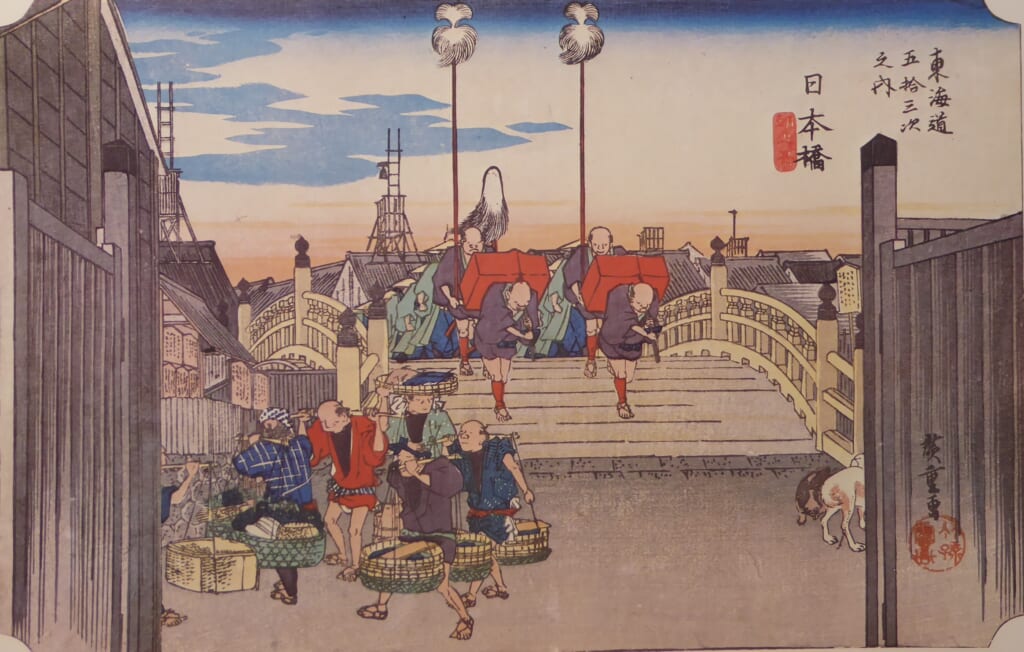
Gyousyo version
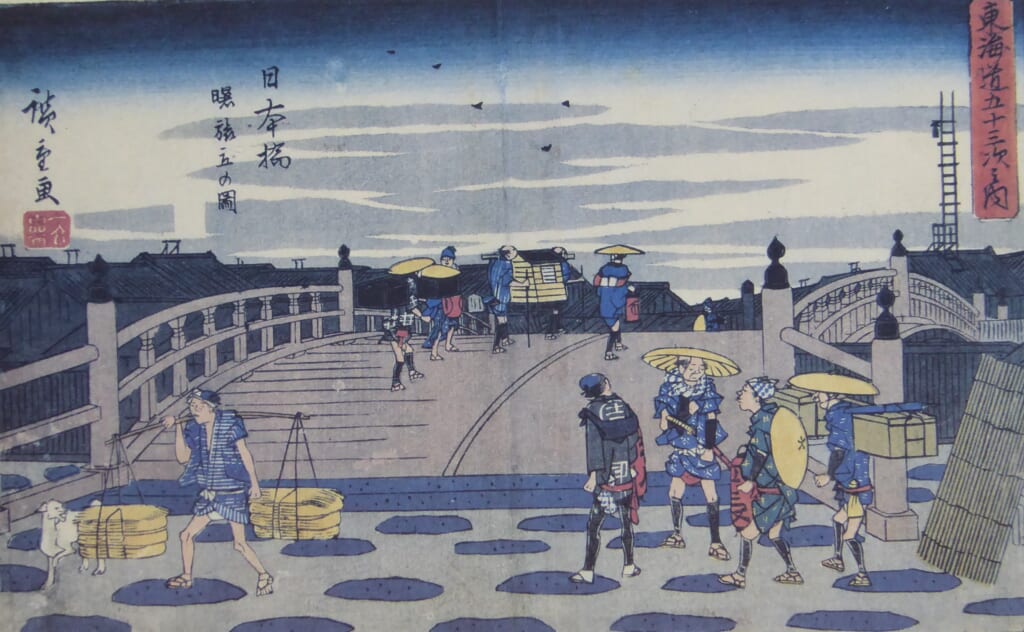
Reisho version
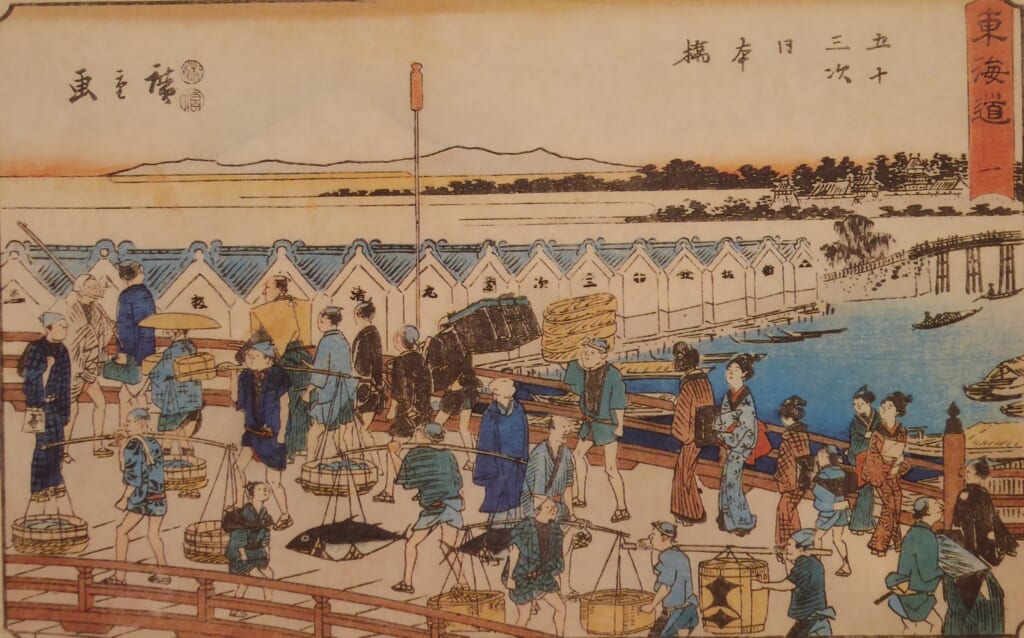
Hokusai version
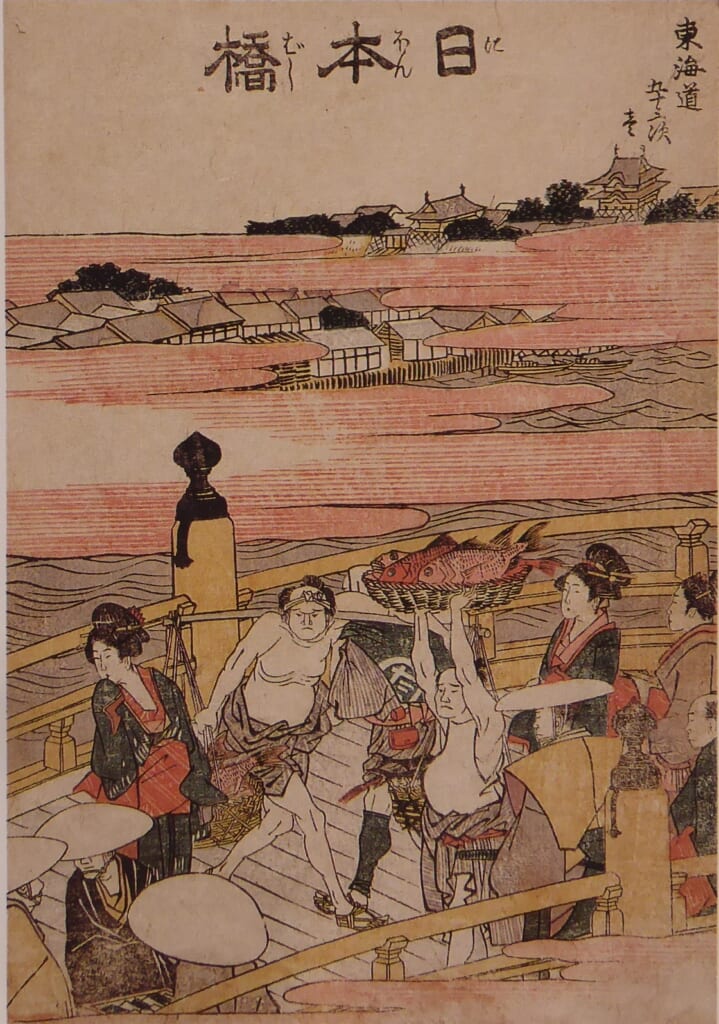
Travel image

Stamp image
